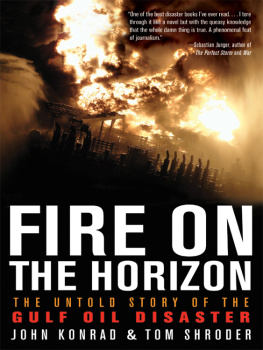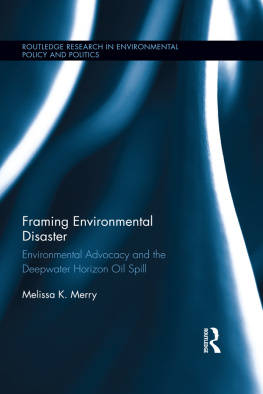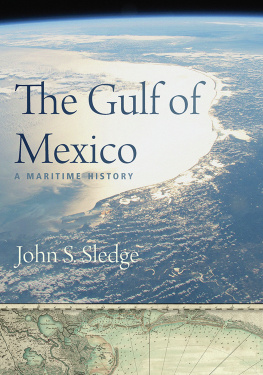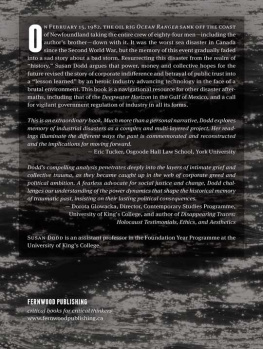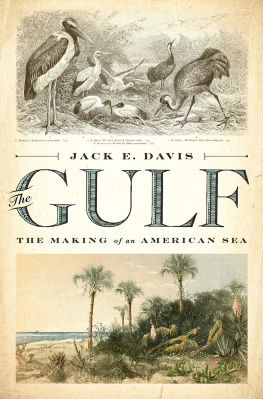Fire on the Horizon
The Untold Story of the Gulf Oil Disaster
John Konrad and Tom Shroder

To the eleven, and their loved ones
Contents
A Perilous Crossing
The End
The Beginning
Oil and Water
Cold Comfort
Sea Legs
King Neptune
Macondo
X Marks the Spot
The Flood
A Captains Colors
Latching Up
Kicks
A Long String
Uneasy Partings
Positive Test
Negative Test
Sailor Take Warning
Something Aint Right
Mayday
Abandon Ship
Mustering
Going Home
A PERILOUS CROSSING
In the vast southern ocean, below the continental tips of South America and Africa and above the ice of Antarctica, storms take complete loops around the earth with no land to obstruct or diminish their force. Occasionally one of those storms veers north to sandwich ships between high winds and land as they round the Cape of Good Hope. On April 19, 2010, my ship broke through just such a veering storm that had brought with it sheets of rain and gusts of hurricane-force wind. Fortunately, I was sailing on the drillship Deep Ocean Ascension, the latest, most expensive and technologically advanced of BPs fleet of exploratory drillships, built in a post-Katrina world to handle the extremes of natureup to fifty-foot waves and winds of 115 miles per hourwith 54,000 horses of available power to propel 105,000 tons of equipment and steel.
I had been with the ship since she was a collection of scattered parts in a Korean shipyard; I was serving as acting captain to a vessel that had yet to float. The only navigating I was responsible for at that point was maneuvering around construction delays and bottlenecks to ensure that she, and particularly her safety systems, were built to specification. Any foreseeable emergency that would visit the ship had been considered before construction had even begun; a new drilling rig is, if anything, a rig made wiser by the disasters of its predecessors. The prospect of fire is anticipated everywhere: the foam dispensers mounted above the accommodations, the deluge sprinklers, lockers filled with firefighting gear, and the rows upon rows of tall, thick canisters above the engine room that, through countless pipes within the rig, could blanket machinery spaces with more than ten thousand pounds of fire-snuffing CO. No expense was spared for the safety of this $750 million vessel.
Yet danger remained. I had continued my training since graduating from SUNY Maritime College in 2000 and had spent nearly ten years advancing my licenses to the highest levelmaster unlimitedbut, as the son of a fireman whose company, Rescue 3 of the Bronx, lost its crew on 9/11, I was aware that its not the dangers you anticipate but rather the unforeseen failures that most often give birth to a catastrophe. And at sea and in the Gulf, when disaster strikes, there are no 911 services to call.
This fact wasnt lost on my wife, Cindy. A mariner herself, she had navigated a large containership stocked with ammunition and supplies through the combat zones of the Persian Gulf. She realized that the danger of rounding the Cape of Good Hope was small compared with navigating waters mined with explosives, but life had changed with the birth of our children, Jack and Eleanor. Id been spending longer stretches at our California home, and Id launched a blog and networking website for mariners that had diminished the financial imperative for me to spend long stretches at sea.
And yet here I was, again.
If anyone had told me ten years earlier that I would come to love life offshore, Id have laughed. But I had discovered a reality that few understand or appreciate: the offshore oil field is a magic place where people pit technology against nature to accomplish impossible tasks. Its a place that more often than not rewards hard work, intelligence, and determination; where degrees and rsums dont matter; where even a high school diploma is not necessary to lead divisions of men and women.
So in 2009 I accepted an assignment with Pride International on the as yet unfinished Deep Ocean Ascension. Now, months later, in midApril 2010, we were sailing through this storm near the Cape of Good Hope.
The weather cleared as the storm passed, and the next day, April 20, we awoke to clear skies and smooth seas. It was 5:30 in the morning when we had our first meeting, but back in our Houston headquarters the time was 9:30 p.m. An hour passed and I was in my office working on paperwork when Cameron Whitten, the ships second officer, scrambled up the stairs with a confused look on his face. He had just been to the crew meeting where one of the guys, calling home after a late shift, got word of a blowout on a rig, owned by the worlds largest offshore drilling company, Transocean Ltd., named the Deepwater Horizon.
I turned on my computer in disbelief. It had to be wrong. Google, CNN, and the rest of the online world made no mention of the event. Then I turned to my blog, gCaptain, and I saw it. A longtime reader, Captain Thad Fendley, was laying anchors for another Transocean rig just ten miles away from the Horizon, snapping pictures and posting the first public images of the rig in flames. I stared at the three-hundred-foot-high fireball that seemed to be consuming the entire Horizon. My heart plunged in my chest; my eyes started to well. My anguish was reflected all around me. A half-dozen among the Deepwater Ascension crew had previously worked on the Horizon. Countless others had friends, neighbors or family aboard. Ones brother had been a member of the crew working around the derrick, where the explosion had ignited that night.
The Horizon wasnt just any rig to me. I had worked for Transocean for seven years, and I had spent nearly ten years (on and off) on ships contracted to BP, the company for which the Horizon was drilling.
Faces of those I knew on the Horizon flashed painfully in my mind. Mark Hay, the subsea engineer on my first rig, the Discoverer 534, had been generous sharing his knowledge with a green hand. Mike Mayfield had reported directly to me on the rig Discoverer Spirit, and had been a willing teacher to a boss two decades younger than himself. Curt Kuchta, a friend with whom I had risen through the Transocean ranks, was the Horizons captain.
And Dave Young. Dave Young, the Horizons chief mate, was one of my closest friends. Wed met in 1996 as second-year students at SUNY Maritime. Wed sailed the world together in the academys training ship. Wed stayed close through the years as we both married and started families. In fact, I was the reason Dave was on the Horizonfor years Id invited him to come to work in the oil field. I was still with Transocean in 2007 when he finally agreed to apply, and Id pulled whatever strings I had to help get him in the door.
I kept looking at the picture of the all-consuming fire, still raging, I knew, five thousand miles away to the west and north.
It was late at night back home. Did I call Daves wife, Alyssa? My God! Theyd just had their third child a few weeks before. I began waking friends with Transocean in Houston, and I followed the updates flowing in from Thad Fendley and the other boat captains who were participating in the rescue efforts and updating everyone via gCaptain, which by now had gotten the attention of many of the Horizon crews families, who were posting frantic pleas for information.
But for long hours, nobody knew the fate of the crew. No one had heard from those who were aboard the Horizon. No one knew if Dave was still alive.
I watched a crewmate dial the numbers for the onboard phones on the Horizon. They just rang and rang and rang.
Next page
